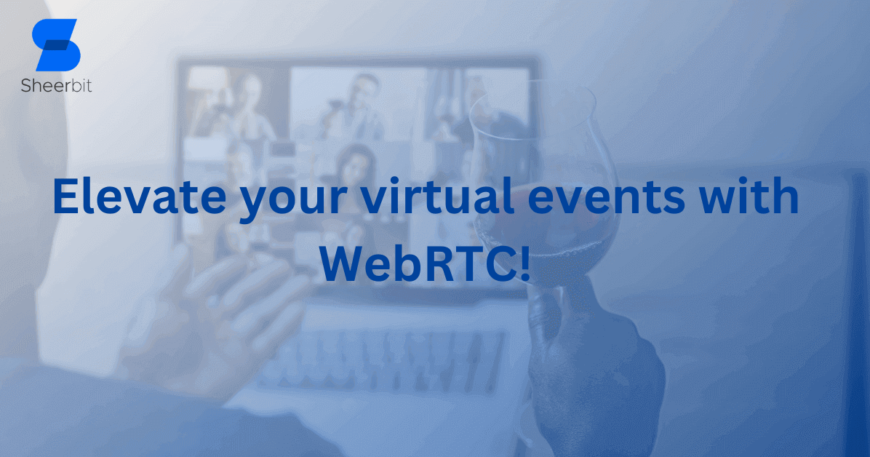In recent years, virtual events have gained immense popularity, allowing individuals and organizations to connect and engage with their audiences remotely. Building a successful virtual event platform requires careful consideration of various factors, such as video streaming, interactivity, and overall user experience. WebRTC (Web Real-Time Communication) is a revolutionary technology that has transformed online communication.
WebRTC is an open-source technology that allows for real-time communication in web browsers. It provides a set of APIs and protocols that facilitate peer-to-peer audio, video, and data sharing without the need for plugins or additional software installations. WebRTC is widely supported by major browsers such as Google Chrome, Mozilla Firefox, and Microsoft Edge, making it extremely accessible.
Key Features and Benefits of WebRTC for Virtual Events
Real-time Video Streaming:
WebRTC allows for seamless video streaming, enabling participants to join live sessions and experience virtual events as if they were physically present. The low latency and high-quality video transmission foster a sense of immersion and engagement.
Interactive Communication:
WebRTC supports bidirectional audio and video communication, enabling participants to interact with event organizers, speakers, and other attendees. Screen sharing, chat, and file transfer are all features that improve cooperation and promote dynamic discussions.
Scalability and Reach:
Virtual event platforms built with WebRTC can easily accommodate a large number of participants simultaneously, making them suitable for events of any size. It eliminates geographical barriers, allowing attendees from across the globe to join and engage in real time.
Cost-Effectiveness:
WebRTC eliminates the need for expensive hardware or third-party services, reducing the overall cost of building and maintaining a virtual event platform. Its open-source nature ensures that developers have access to a wide range of resources and community support.
Key Components of a WebRTC-based Virtual Event Platform
Media Streaming:
Utilize WebRTC’s media streaming capabilities to transmit high-quality audio and video content to participants. Consider using adaptive bitrate streaming to ensure optimal video quality based on participants’ network conditions.
Interactive Features:
Implement real-time chat, Q&A sessions, polling, and screen-sharing functionalities to encourage active participation and engagement. These tools allow attendees to communicate with presenters and other attendees, building a feeling of community.
User Authentication and Access Control:
Incorporate user authentication mechanisms to ensure secure access to virtual events. Implement access controls for different event sessions, such as public, private, or invitation-only, based on the event requirements.
Analytics and Metrics:
Integrate analytics tools to track participant engagement, duration of attendance, and other relevant metrics. This data can help organizers gain insights into the effectiveness of their virtual events and make informed decisions for future iterations.
Mobile Compatibility:
Ensure that your virtual event platform is mobile-friendly, allowing participants to join and engage seamlessly from their smartphones or tablets. This increases accessibility and convenience for a wider audience.
Best Practices for Building an Engaging Virtual Event Platform
Prioritize User Experience:
Create a user-friendly, intuitive interface that is simple to use. Consider the overall flow of the event, and provide clear instructions to participants for joining, interacting, and accessing various features.
Test and Optimize Performance:
Conduct thorough testing to ensure the platform’s stability, scalability, and performance under different network conditions. Optimize media streaming and bandwidth usage to deliver a smooth experience for participants.
Leverage Integration Capabilities:
Integrate with popular platforms and tools such as social media, event management systems, and customer relationship management (CRM) software to enhance the reach and impact of your virtual events.
Provide Technical Support:
Offer prompt technical support channels, including chat or email, to address any participant queries or issues during the event. Ensuring a seamless experience contributes to higher satisfaction levels.
Collect Feedback and Iterate:
Gather feedback from participants after each virtual event to understand their experience, identify areas for improvement, and refine your platform accordingly. Continuous iteration is key to delivering outstanding virtual experiences.
Conclusion
WebRTC provides a powerful foundation for building virtual event platforms that deliver engaging and interactive online experiences. By leveraging WebRTC’s real-time communication capabilities, you can create immersive events that transcend geographical boundaries, facilitate dynamic interactions, and foster meaningful connections. Remember to focus on user experience, test performance, integrate with relevant tools, provide support, and continually refine your platform based on participant feedback. With WebRTC, the possibilities for creating captivating virtual events are virtually endless.





